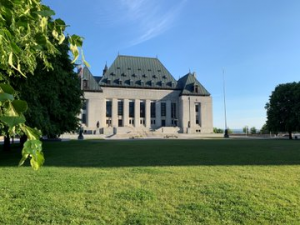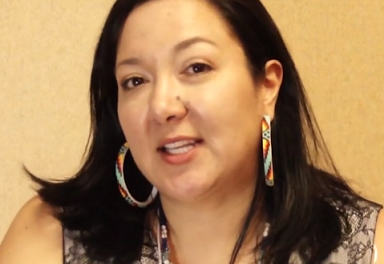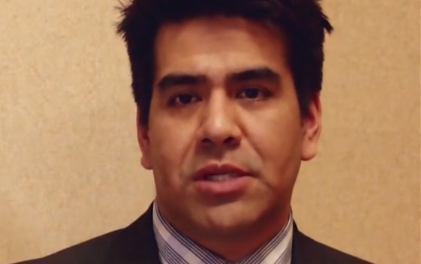By: Joanna Smith Ottawa Bureau reporter, Published on Thu Apr 14 2016
OTTAWA—The Supreme Court of Canada has expanded the responsibility of the federal government for indigenous peoples in Canada, ruling unanimously that Métis and non-status Indians fall under its constitutional jurisdiction.
“The constitutional changes, the apologies for historic wrongs, a growing appreciation that Aboriginal and non-Aboriginal people are partners in Confederation, as well as the Report of the Royal Commission on Aboriginal Peoples and the Final Report of the Truth and Reconciliation Commission of Canada, all indicate that reconciliation with all of Canada’s Aboriginal peoples is Parliament’s goal,” Supreme Court Justice Rosalie Abella wrote in the unanimous decision delivered Thursday morning.
The Supreme Court ruled that the roughly 418,000 Métis and 214,000 non-status Indians — or First Nations people without registered Indian status — should be considered “Indians” under section 91(24) of the Constitution Act of 1867, just as Inuit peoples and First Nations with registered Indian status are.
The landmark ruling gives these groups a starting point for negotiating rights, treaties, services and benefits with Ottawa, although it does not provide the federal government with directions on how to proceed.
Prime Minister Justin Trudeau called it a “landmark decision” and reiterated his Liberal government has committed to reset Canada’s relationship with indigenous peoples.
“Quite frankly, we as a government have positioned ourselves in a way that is focused on renewing the relationship with indigenous peoples across this country through an open, respectful, honest, engaged partnership and relationship,” said Trudeau, noting that the Liberals’ first budget committed billions in spending to help indigenous communities “close the gap” with other Canadian communities.
“We, of course, respect the Supreme Court decision, and we will be engaging, not just on our own, but with indigenous leadership, to figure out what the path is forward. But I can guarantee you one thing: the path forward will be together, as we move forward,” Trudeau said.
The Supreme Court said this decision should put an end to the back-and-forth over whether provinces or the federal government has legislative jurisdiction over Métis and non-status Indians, which often left these people with no sure way who to turn to or negotiate with, or who to hold to account for unfulfilled obligations.
“Delineating and assigning constitutional authority between the federal and provincial governments will have enormous practical utility for these two groups who have, until now, found themselves having to rely more on noblesse oblige than on what is obliged by the Constitution,” Abella wrote in the decision.
“This results in these Indigenous communities being in a jurisdictional wasteland with significant and obvious disadvantaging consequences,” Abella wrote, adding that while the Supreme Court recognizes section 91(24) does not create a duty to legislate, “it has the undeniably salutary benefit of ending a jurisdictional tug-of-war in which these groups were left wondering about where to turn to for policy redress.”
Indigenous Affairs Minister Carolyn Bennett said in a statement posted to the department website that the federal government “welcomes and respects” the ruling, which she described as bringing “much needed clarity to an issue that has lingered for too long.”
“There is much work to be done. We are committed to working in partnership with Métis and non-Status Indians on a nation-to-nation basis, along with other partners, to ensure we are following the court’s direction in implementing this decision,” Bennett said.
“Making progress will require real co-operation and genuine partnership in order to advance this important dialogue and map the way forward together. This is both the right thing to do and a key path to economic growth for all Canadians,” Bennett said.
The decision prompted jubilation and emotion from the Métis and non-status Indian leaders who crowded the foyer of the Supreme Court to react to be among the first to react to the decision Thursday morning.
“We’ve been decades waiting for this decision, waiting for this recognition, and now hopefully we’ll not have to wait any longer to be at any table that is established in this country to address the social-economic needs of Métis and non-status Indians or their rights,” said Dwight Dorey, national chief of the Congress of Aboriginal Peoples, who, in 1999, along with late Métis leader Harry Daniels, launched the court action that led to this decision.
Harry Daniels’ son, Gabriel Daniels, said his father would be pleased.
“He’d probably be doing a jig right now,” he said.
“I think he would know in his heart that this was going to happen. And I think that, knowing my father, he’d already be planning ahead and thinking ahead, like, where do we go from now, and start . . . like, what’s the next step, what’s the next phase,” said Daniels.
The ruling noted that even before Confederation, the Crown had often included Métis and others of mixed aboriginal ancestry in its understanding of “Indians,” used then as a generic term for aboriginal peoples, and that it often applied laws and policies to them as such.
That included sending an untold number of Métis children into the Indian residential school system, where, the Truth and Reconciliation Commission noted, they suffered the same dark legacy of abuse as First Nations and Inuit children.
The Supreme Court, however, did not deliver the other two declarations that Métis and non-status Indians had been seeking: that the federal government, not the provinces, has a fiduciary duty to Métis and non-status Indians, and that it has a constitutional obligation to consult and negotiate with Métis and non-status Indians.
The Supreme Court ruled these two declarations were not needed, because the fiduciary duty and the obligation to consult for all aboriginal peoples are already well-established.
The Supreme Court also noted that this ruling should not be taken to mean that provincial laws regarding Métis and non-status Indians are constitutionally invalid.
Harry Daniels, the late national Métis leader best known for negotiating the inclusion of the rights of Métis people in section 35 of the Constitution Act of 1982, launched the case with Dwight Dorey, chief of the Congress of Aboriginal Peoples (now calling itself the Indigenous Peoples’ Assembly of Canada), in 1999.
They argued the federal government was being discriminatory on its delivery of programs and services, negotiations and interpretation of aboriginal rights by refusing to view Métis and non-status Indians — First Nations people, most often living off-reserve, who are not registered according to the criteria of the Indian Act — as their constitutional responsibility in the same way it does for status Indians and Inuit people.
To Read the Full Decision of the Supreme Court Click here
Section 91(24) of the Constitution Act of 1867 gives the federal government jurisdiction over “Indians, and lands reserved for Indians,” which now also includes Inuit people in that definition.
This affects everything from the way negotiations work for land claims and natural resource development, the right to hunt, fish or trap on public land and the way housing, health and education services are funded and delivered, with untold additional costs to Ottawa at a time when the Liberal government has already dramatically increased its budget for First Nations and named improving their outcomes as a top priority.
Daniels died in 2004, but his case made history in January 2013 when a Federal Court judge ruled both Métis and non-status Indians would be considered “Indians” and fall under federal jurisdiction.
That decision, however, did not define a path for the federal government when it came to fiduciary responsibility or the duty to consult.
The Federal Court of Appeal narrowed the scope in April 2014, excluding non-status Indians and upholding those rights for Métis people who met specific criteria.
The Congress of Aboriginal Peoples decided to appeal to the Supreme Court, hoping the ruling would provide the recognition it had won from the lower court. The federal government launched a cross-appeal.
The Supreme Court heard arguments from the Congress of Aboriginal Peoples (recently renamed as the Indigenous Peoples’ Assembly of Canada), the federal government and several other interested groups last October.
The Supreme Court ruling issued Thursday upheld the Federal Court ruling and overturned the appeal, concluding that it was not necessary to agree on a definition of who is and is not a Métis — or a non-status Indian — for the purposes of section 91(24) of the Constitution Act.
“There is no consensus on who is considered Métis or a non-status Indian, nor need there be. Cultural and ethnic labels do not lend themselves to neat boundaries,” Abella wrote.
Clément Chartier, president of the Métis National Council, noted the decision did uphold the term Métis as it applies to section 35 of the Constitution Act of 1982.
“We believe, and we take the Prime Minister at his word, that they are going to seek reconciliation with the Métis Nation and the rest of Canada based on Section 35. And they’ve given that signal to us, and we believe that now we can move forward,” said Chartier.
“Now there is no jurisdictional barrier. They cannot say, well, we can’t deal with you because, you know, Section 91(24) doesn’t include you,” he said.
Source: Toronto Star, April 14, 2016





